«Before the ease of cameras and social media, there was still the basic human urge to document our journeys, even if that journey was a work assignment from Napoleon. One exquisite example of such a "carnet de voyage," or travel sketchbook, survives intact from 1811 and was presented to the Museum in 2008 as a gift of the Apollo Circle in honor of Philippe de Montebello.»
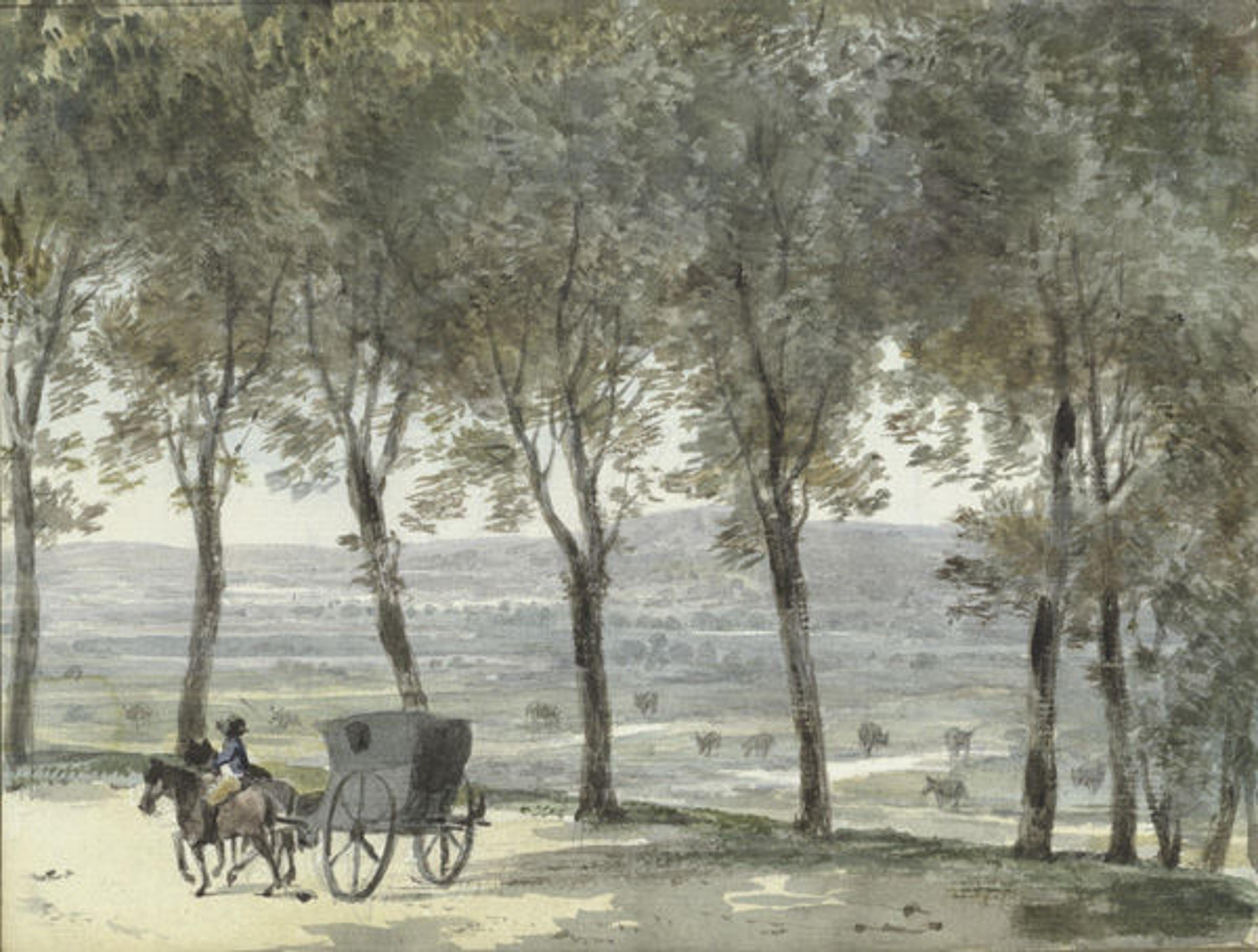
Pierre François Léonard Fontaine (French, Pontoise 1762–1853 Paris). Sketchbook of a Journey to the Château d'Eu, 1811. 7 1/2 x 6 1/16 x 1/2 in. (19 x 15.4 x 1.3 cm). The Metropolitan Museum of Art, New York, Gift of The Apollo Circle, in honor of Philippe de Montebello, 2008 (2008.337a–ee)
The sketchbook, which will be on view in Gallery 690 through April 27, was created by Pierre François Léonard Fontaine (French, 1762–1853), the chief architect of the Napoleonic era. In addition to designing buildings and their décor, often in collaboration with his partner, Charles Percier (1764–1838), Fontaine was an advisor to the emperor on many matters of urban planning and design. In early autumn 1811, he was sent on a mission to Normandy to assess the suitability of converting the château d'Eu, then in use as a military hospital, into an imperial palace. The château had been built in the sixteenth century by Henri I, duc de Guise, and his wife Catherine de Clèves and would be used as a summer palace by Louis-Philippe from 1830–48, and has since 1973 housed the Musée Louis-Philippe.
The sketchbook, which had stayed with the descendants of the architect until it was acquired by the Museum in 2008, suggests that the trip was a leisurely and pleasant one. It contains thirty watercolors made en plein air that reflect Fontaine's delight in the villages and countryside he passed through as well as his diligence in gathering information for the Emperor.
The scenes that captured his attention along the way ranged from bucolic vistas to bustling commerce. On the road to Amiens, he stopped along a tree-lined road to capture the view of cattle grazing in a lush valley (image above). Their route also took them along the English Channel. At Le Tréport, a fishing village nestled at the foot of a cliff, he recorded the view, including the ship-building activity on the beach.
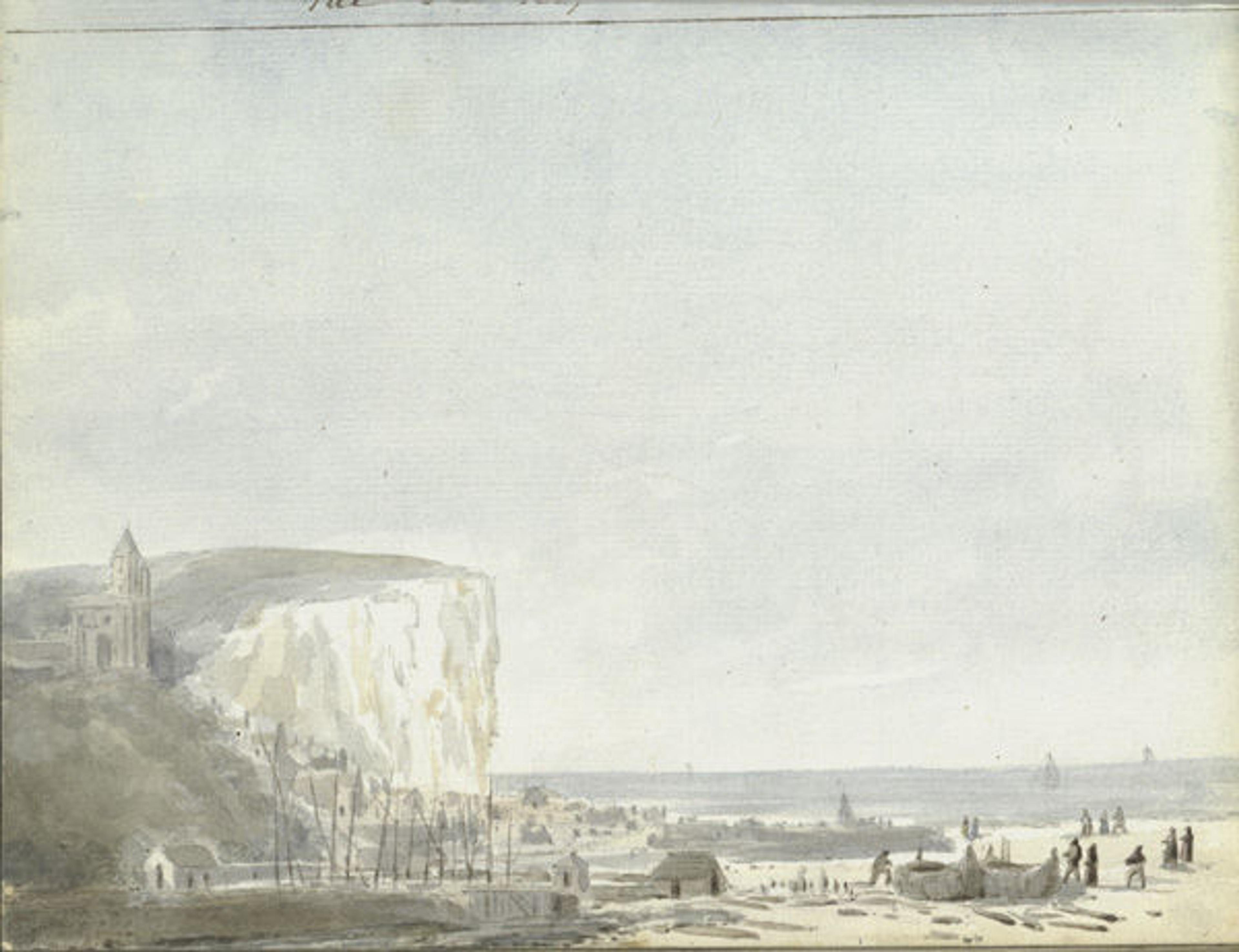
He then climbed the cliff, to paint the same town seen from above.

When he arrived in Eu, he made views of the château from numerous perspectives, noting its appearance from a distance (distinguished by its mansard roof)...
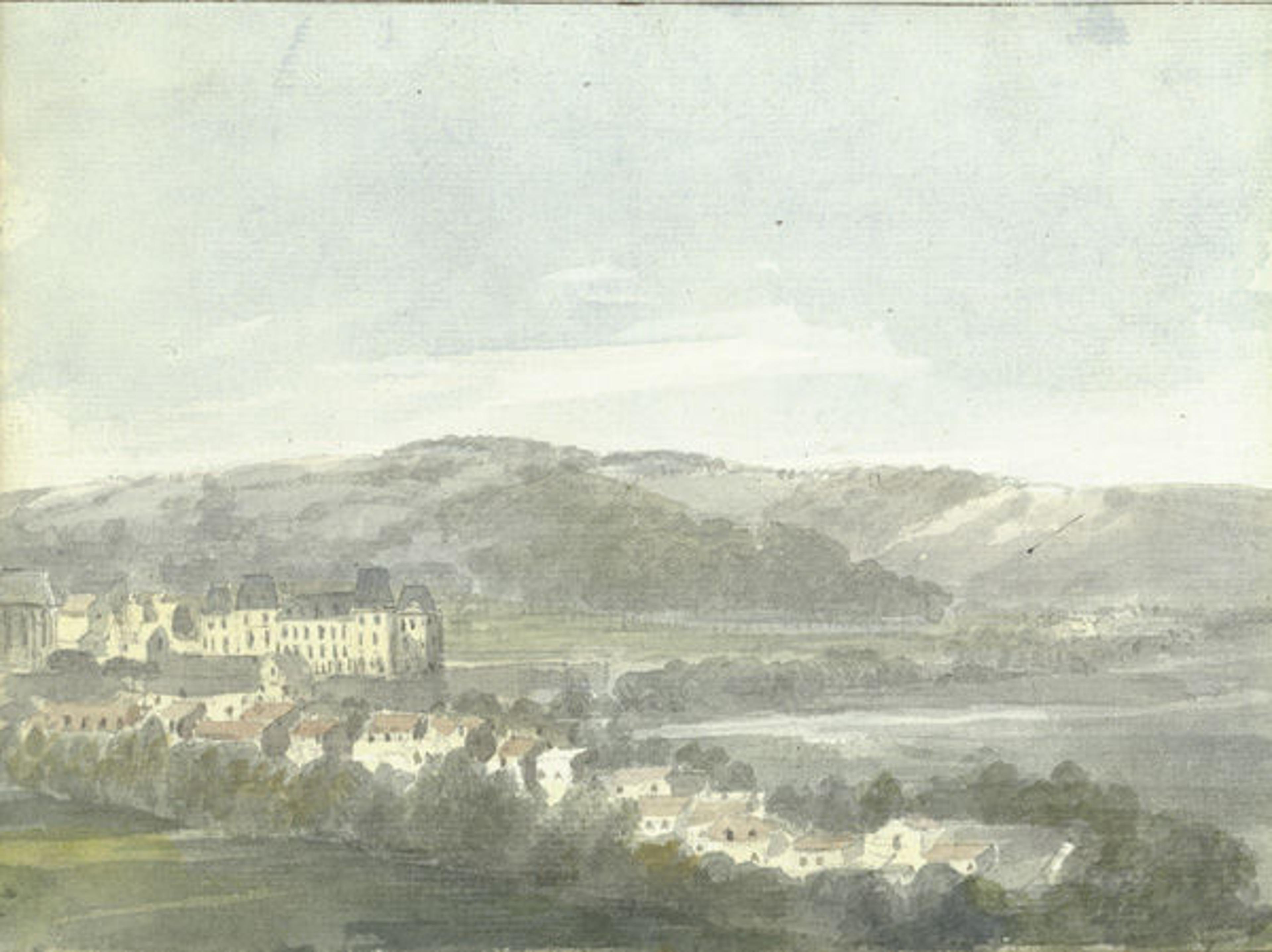
...recorded its architectural details in an elevation view...
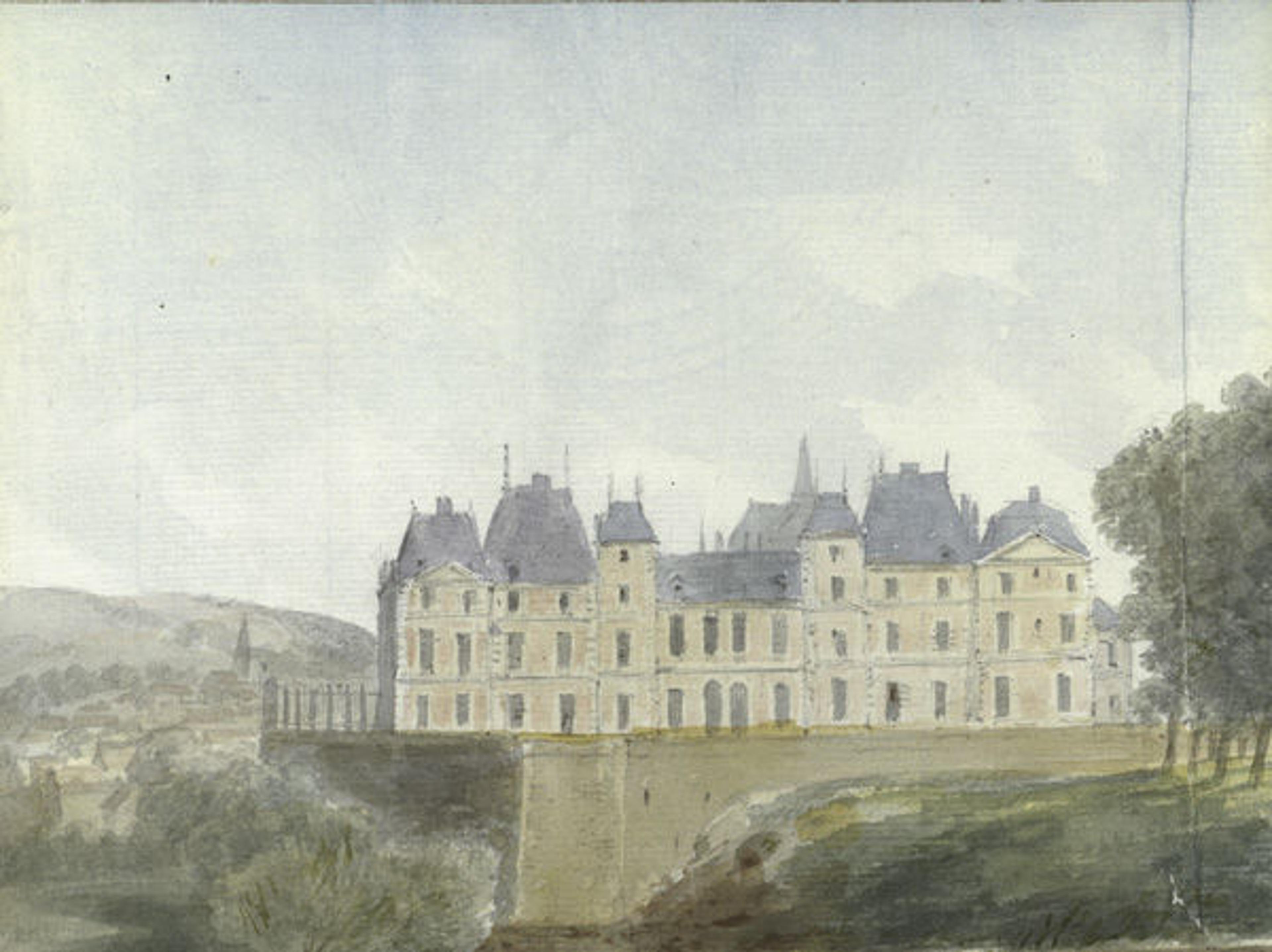
...and noted its proximity to the ocean inlets.

After he completed his study and inventory of the château d'Eu, Fontaine returned to Paris, continuing to make watercolors along the way. His interest in urban spaces often led him to record scenes like the bustling harbor in Dieppe:
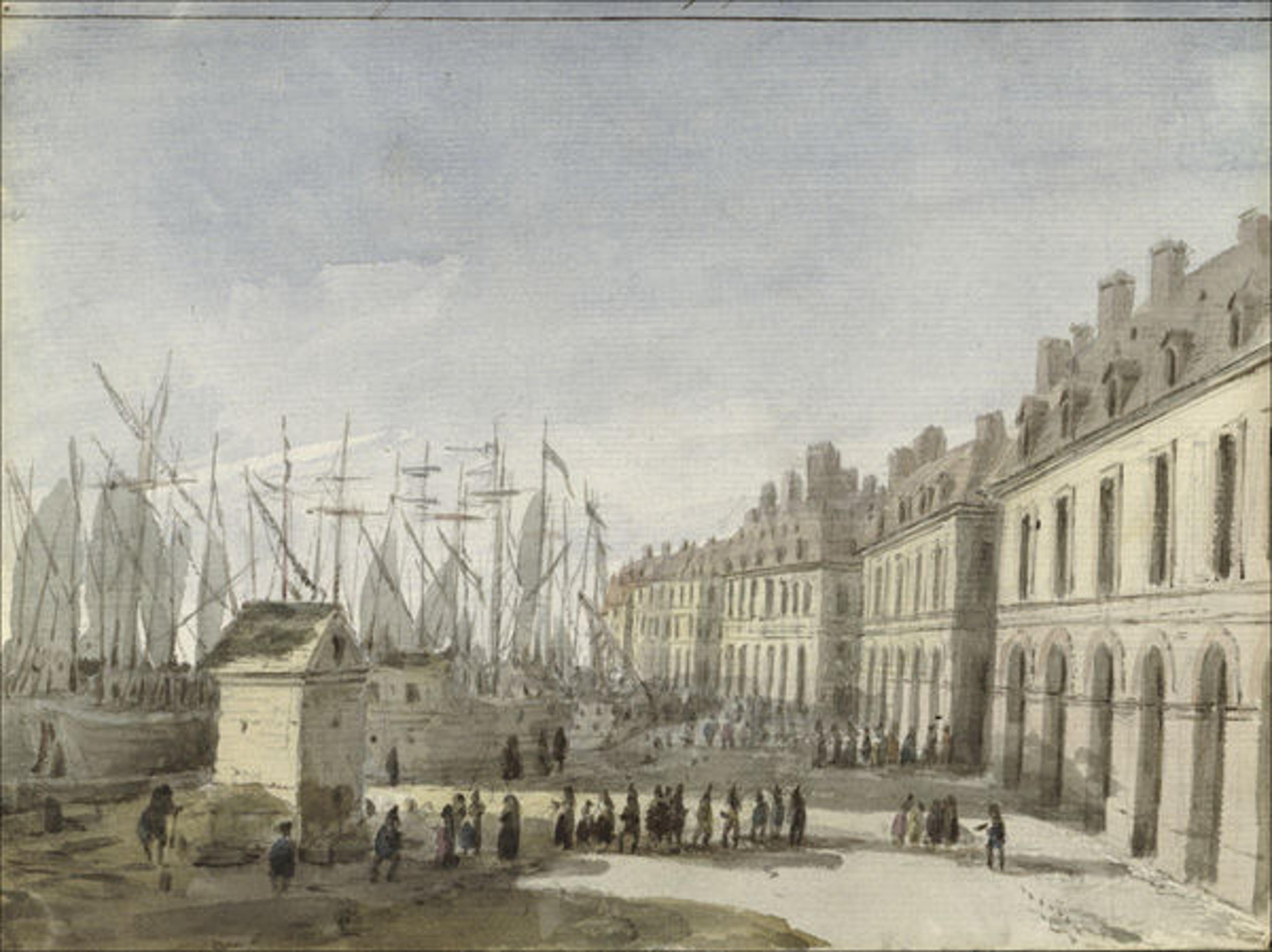
Although the following page shows him also susceptible to the simple charms of a sunset:
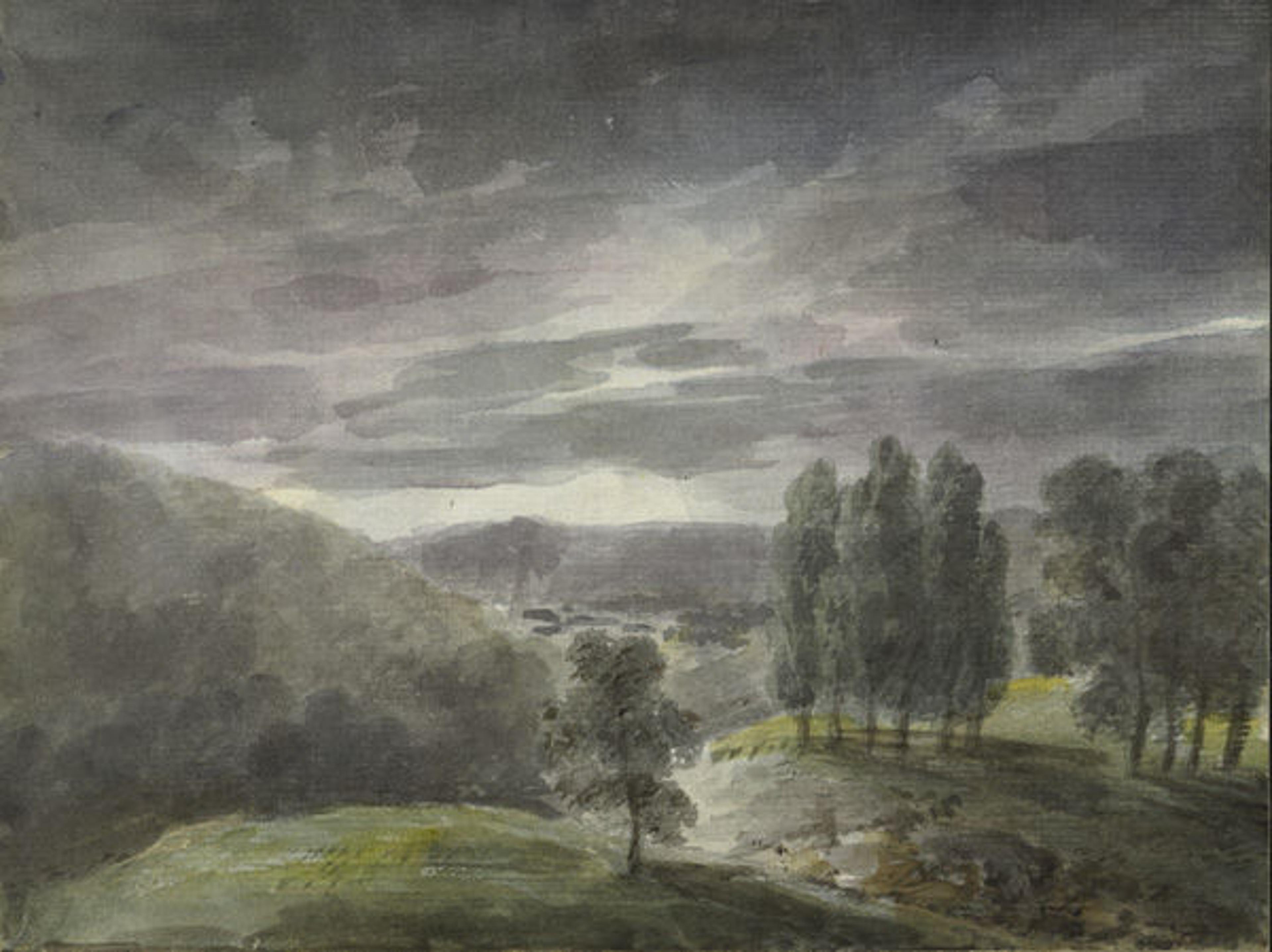
Due to historical events, such as Napoleon's ill-fated invasion of Russia in 1812, the renovation of the château into an imperial palace was never carried out, but the complete watercolor record of Fontaine's journey can be seen in the Museum's online collection.